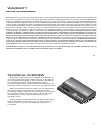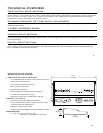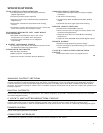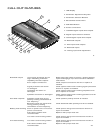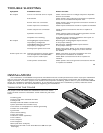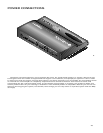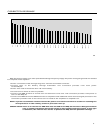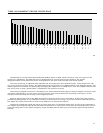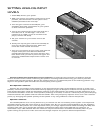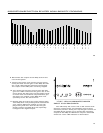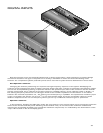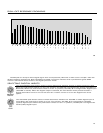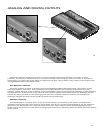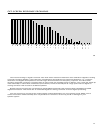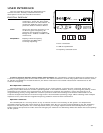
The DEQ 30 can accept either balanced (Mini-XLR™) inputs or RCA inputs. However, only one input can be
chosen per installation. The DEQ 30 was not designed to be a multi-source input selector. The system
designer/installer must determine which configurations will work and yield the best sound quality.
The input sensitivity is adjusted with separate left and right input level potentiometer. Input range from 150
mV up to 10 Volts rms (per phase). The balanced inputs are perfect for an OEM interface (see diagram above). The
added capacitors eliminate any potentially damaging DC offset from an OEM source unit. The added resistors load
the source unit so that a power fader, if applicable, will operate correctly.
The analog-to-digital conversion is handled by an 18 bit balanced delta sigma analog-to-digital converter. It has
192 times oversampling. It is the same converter used in high-end professional recordings. The result is a near
invisible conversion from the analog to the digital domain.
Properly setting the level of the DEQ 30 requires a test disc with a tone recorded at all bits high (the highest
possible recording level). A clip indicator informs you if the level is too high. If you do not have a test disc you can
still adjust the input levels but it is much more difficult to maximize the system.
The beauty of DEQ 30 is that the signal-to-noise ratio does not degrade with boost. As long as the equalizer is
not clipped, boosting the DEQ 30 will not add any distortion or noise. Since most musical recordings never reach a
high recording level in the upper frequency range, the DEQ 30 will allow you to boost the upper bands without
penalty.
TIME ALIGNMENT ERROR PROBLEMS
11
42
25Hz
31.5Hz
40Hz
50Hz
63Hz
80Hz
100Hz
125Hz
160Hz
200Hz
250Hz
1000Hz
1250Hz
1600Hz
2000Hz
2500Hz
3150Hz
4000Hz
5000Hz
6300Hz
8000Hz
10000Hz
12500Hz
16000Hz
20000Hz
315Hz
400Hz
500Hz
630Hz
800Hz



